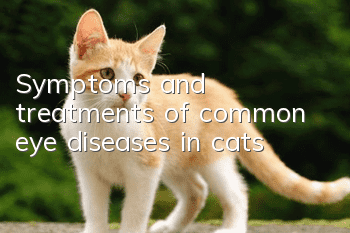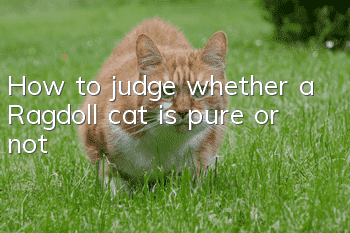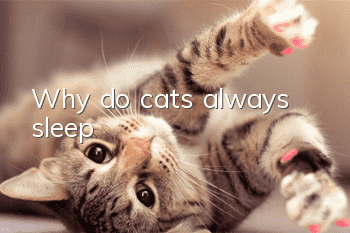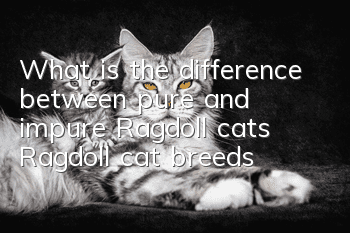Symptoms and treatments of common eye diseases in cats

A cat’s bright eyes are a cat’s treasure. Many people have become a group of alternative cat lovers because of their fascination with cat eyes. The special structure of cat eyes enables them to see in the dark, and cats can also be said to be animals that rely on vision. However, cat eyes are very delicate organs, and they are also very fragile and can become dull due to external infection. Therefore, in normal times, if there are any mild symptoms, we must seek medical treatment as soon as possible to avoid irreparable damage. .
1. Retinal detachment
Due to injuries, infectious diseases, genetics or unbalanced diet, retinal photosensitivity, cell degeneration, inflammation and rupture of the retinal choroid can lead to detachment. Retinal detachment will gradually worsen. If left untreated, it will lead to blindness. If a cat is found to have this eye disease, the owner must take the cat to the doctor as soon as possible to prevent the condition from getting worse.
2. Conjunctivitis
The conjunctiva is located on the inner layer of the cat’s eyelids and covers the visible surface of the eyeball and the whites of the eyes. Conjunctivitis has different symptoms depending on the degree, including tearing, redness and swelling, eyelid closure, and sticky yellow discharge from the eyes. ; And general symptoms may occur in one or both eyes. The occurrence of conjunctivitis is mostly caused by irritation from soap, steam, smoke, respiratory tract infection, congenital eyelid inflexion, contusion or bacterial infection. If sticky yellow secretions continue to occur, you must seek veterinary diagnosis and treatment. If the disease causing conjunctivitis is more serious, it should be treated first. Remove the dirt around the eyes, prescribe eye drops from the hospital, and apply eye drops to the cat according to the doctor's instructions. If you have a tendency to scratch your eyes, use an Elizabethan collar to prevent it.
3. Problems with the third eyelid
The cat’s third eyelid, also known as the nictitating membrane, covers the conjunctiva to protect the cornea, remove foreign matter, and prevent excessive dryness of the eyes. If the third eyelid prolapses in one eye, it may be caused by eye irritation. However, the cause of this disease has not yet been fully understood, but it is most likely that the function decline caused by the virus causes the eyeball muscles to retract into the eye socket, or the fat tissue under the eye shrinks, causing the eyeball to move backward and the third eyelid to squeeze forward. pressure. In addition, gastrointestinal discomfort, chronic parasitic disease, loss of appetite, fever, poisoning or polyganglionic atrophy may be the causes. Therefore, if your cat has symptoms of third eyelid prolapse and does not disappear on its own, please take them to the veterinary hospital and ask a veterinarian to find out the real cause.
4. Entropion and ectropion of eyelids
Turning the eyelids toward the eyeball is called entropion. It is mostly caused by congenital disease, but occasionally it may be caused by accidental damage to the eyelids due to fighting between cats. When the eyelids are entroped, the fur will irritate the eyes, cause corneal injury, tearing, and cause keratitis, corneal ulcers, etc. As forEctropion of the eyelids is caused by trauma such as bites or traffic accidents. The treatment of entropion and ectropion of the eyelids must be performed as soon as possible before the cornea is damaged or the damage is not serious, so as to avoid permanent damage to the cat's eyes.
5. Epiphora
Epiphora is caused by excessive tear secretion or blocked tear ducts. This disease will cause the hair under the cat's eyes to be dyed brown; epiphora may be related to eye allergies, eye infection due to viruses, Conjunctivitis, keratitis, and respiratory infections are related. This disease is common in Persian cats with genetic shortcomings. This eye disease may be related to eye allergies or respiratory infections, and often appears in cats with genetic short faces such as Persians and Exotics. Therefore, owners of these cats should be careful when giving their cats a medical examination for the first time. Check their eyes.
6. Glaucoma
The cause of glaucoma is due to the increase in the anterior chamber fluid between the cornea and the lens, which causes the pressure in the eye to increase and makes the cornea cloudy. In addition, if the cat's eyes are bleeding, the iris and related tissues are inflamed, or the eye fluid caused by tumors cannot circulate, it will also cause this disease. Suffering from glaucoma, severe cases can cause blindness. Therefore, if you find that your cat’s eyes are enlarged, the cornea is mixed, or there are any changes, you must seek medical attention as soon as possible. There are medical treatments for glaucoma, such as eye drops, etc., but this depends on the severity of the glaucoma. If in addition to high intraocular pressure, eye infection or even pus accumulates, surgery is a quicker solution.
7. Keratitis
Under normal circumstances, the cornea is transparent, but when the surface is damaged and inflamed by eyelashes, trauma, entropion or conjunctivitis, it will become cloudy or appear light blue. color. It will eventually turn into a white opaque body, but it is different from a cataract. If the cornea is injured non-infectiously, the disease will heal quickly, but if it is infected, ulcers and inflammation will develop later. Symptoms of keratitis include eye pain, tearing, and corneal whiteness. If you find that your cat has the above symptoms, you should go to a veterinary hospital for examination. You must not treat it yourself with eye drops used by humans or eye drops containing adrenocorticoid. The general approach is to use a warm towel to lightly apply on the cat's eyelids. This can promote blood circulation, and then treat it with some antibiotic ointment prescribed by a pet physician.
8. Cataract
The pupil opacity of cat eyes is often caused by the lens becoming cloudy and opaque due to congenital or acquired reasons. This is called cataract. It usually appears in older cats or cats with diabetes. The opacified spots on the lens surface of older cats are not necessarily cataracts. This may only be caused by changes in the refractive index of the lens with old age, and will not affect the cataracts.Affects vision. However, if you find that your cat’s eyes have become cloudy, you should seek medical advice as soon as possible. Cataracts in cats must be evaluated by a veterinarian. If cataracts occur in both eyes, surgical treatment is the only option. The common treatment for cataracts is surgery to remove the opaque portion and restore vision to the cat. Only experienced doctors can perform this kind of surgery. If the surgery is not possible or fails, the cat's vision will gradually lose.
Of course, the appearance of white mist in the eyes does not mean cataracts. The spots on the lens surface of older cats are not necessarily cataracts. They may only be caused by changes in the refractive index of the lens in old age, and Does not affect vision.
Cat eye diseases are contagious, so you need to isolate them if they are infected. If they are viral, they are easily contagious. Just pay attention to the disinfection of foreign objects. If it is daily eye care such as Persia, or a relatively mild inflammation, you can use anti-inflammatory eye drops and eyewash together.
- What to do if a cat gets ringworm? How to treat ringworm in kittens
- Is there any way to prevent Ragdoll cats from losing hair? Teach you the solution!
- Why are cats afraid of orange peels?
- What does it mean when a cat licks a person's face and hands?
- How to tell if your cat has fleas?
- Why do orange cats have tear stains? Is it normal for a three-month-old orange cat to have severe tear stains?
- What diseases are cats prone to get from eating cat food?
- What are the personalities of cats? Analysis of 12 types of cats’ personalities
- How do aboriginal cats have a good relationship with new cats?
- Female cat neutering surgery cost



